Overlanding and Off-Roading are two types of vehicle-based adventure that often get mixed together. While they have their similarities, they also have their standout differences. In the world of off-road forums and Facebook pages, you will see people take great offense to someone calling their weekend camping trip an Overlanding trip. Are they incorrect though? What is the difference between a simple off-road camping trip and an Overlanding adventure?
According to Oxford Languages, Overlanding is, “[to] travel a long distance over land.” While the definition of “off-roading” is, “the activity or sport of driving a motor vehicle over rough terrain.” Simply put, Overlanding can include off-roading, but going off-road does not equal Overlanding.
In this article, we will dive deeper into the similarities and differences between Overlanding and off-roading. Why does it matter what the distinction is between the two, isn’t a vehicle-based adventure just about having fun? I’m glad you asked! It doesn’t matter and it is all about fun… in theory. However, if you are looking to build out a vehicle, knowing the purpose of your build is important. Otherwise, you could spend a lot of money and then realize down the road that your build isn’t ideal for the type of driving you like to do.
The Differences Between Overlanding and Off-Roading
| Overlanding | Off–Roading |
| Covers Multiple Days/Weeks/Months | Does Not Have a Time Frame Attached |
| Vehicle Needs To Be Setup To Live Out Of | Vehicle Should Be Equipped With Emergency Supplies, But Does Not Need Anything More |
| Can Spend Most Of Your Time On Paved Roads | Time Spent Solely Off Of Pavement |
| Does Not Need 4×4 | 4×4 Will Often Be Engaged |
| About The Journey | Usually About The Destination Or A Specific Obstacle/Trail |
| Typically Well Planned | Can Be Spontaneous |
| Vehicle Should Be Reliable And Comfortable | Vehicles’ Main Focus is Capability |
| Vans, Trucks, and SUVs Are Standard Overland Choices. An Adventure Style Motorcycle Is Also An Option | Vans, Trucks, SUVs, Dirt Bikes, ATVs, And UTVs Can All Be Used To Off-Road |
What is off-roading?
As I quoted above, off-roading is “the activity or sport of driving a motor vehicle over rough terrain.” Off-roading also referred to as 4x4ing, has no time frame attached to it. You can go on an off-road adventure for an hour or you could spend multiple days off-roading. However long you are doing it for, the main ingredient is being away from the pavement.
There are two main types of 4x4ing enthusiasts. Those who are looking simply to get away from the hustle and bustle of life and head out into the wilderness via a dirt road, and those who are wanting to push their vehicle’s limits and test their personal driving capabilities. This can be in the form of rock crawling, dune driving, or even mudding.
Below I will break down the 5 main subcategories of off-roading:
Backroad Exploring
Exploring unpaved backroads is the most common form of off-roading that most people that are interested in the niche will experience. It is the simple act of heading out to explore an area that you may need four-wheel drive or a lifted vehicle to access. Often there is a destination as a goal, such as a lake or a mountain view. However, other times it is just about driving down roads or trails with no real destination in mind and hoping to stumble across a new hidden gem.
Not always, but often times exploring a backroad isn’t at all about testing driving skills, and solely about getting away from the hustle and bustle of life.
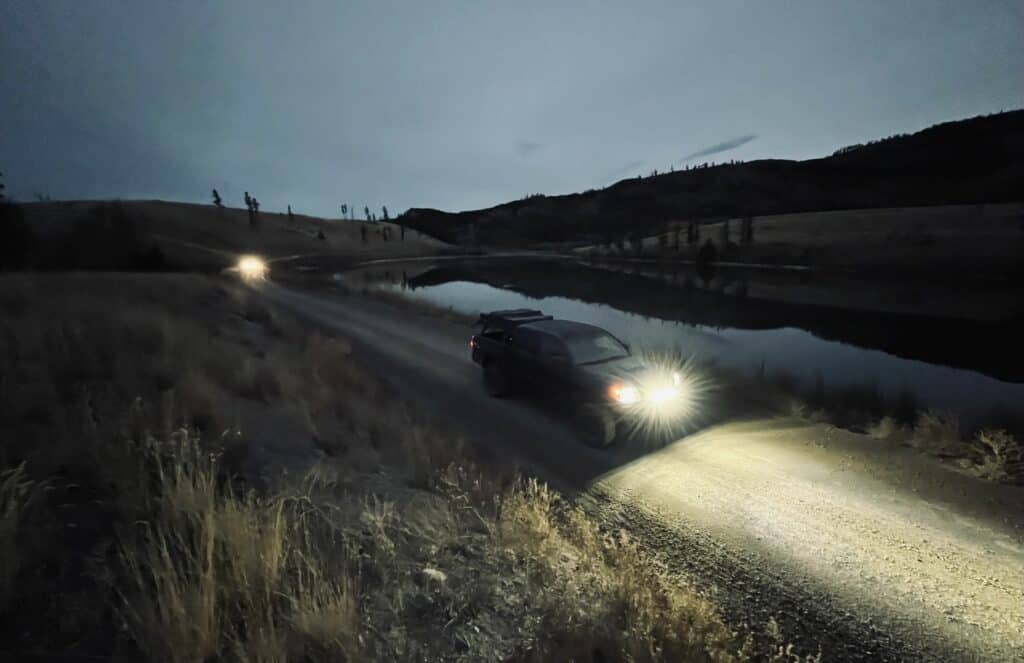
Rock Crawling
Depending on where you live, rock crawling is often the next step people take when they get into 4x4ing. They start by exploring backroads but slowly begin to realize there is so much more to explore if they were to begin rock crawling. With that said, people that are serious about rock crawling, aren’t doing so with the goal of a destination in mind. They are wanting to test their driving skills along with the capabilities of their vehicle.
As the name implies, it is the act of crawling your vehicle slowly up and over rocks. Sometimes this means a dried-up riverbed, other times it means a steep unmaintained road that has become too gnarly for the average vehicle to attempt. Though, in places like Moab, Utah rock crawling is driving over the unaltered natural landscape.
When someone is exploring backroads, they are typically able to do so in a fairly stock vehicle. When it comes to crawling, it means having to build your vehicle. Lockers, lifts, body armor, larger wheels, and a roll cage are just some of the items that people add to their rigs.
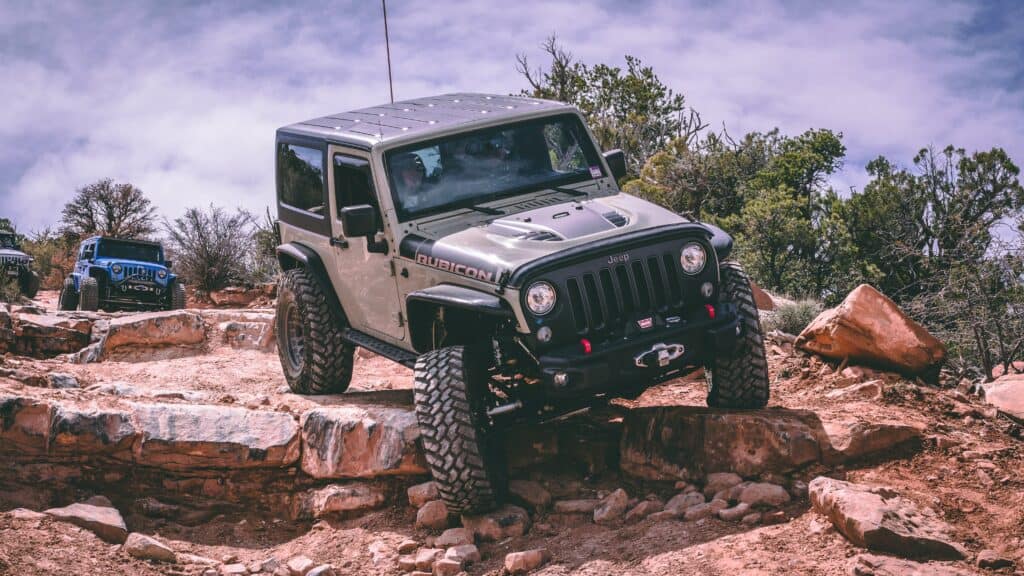
Mudding
Whichever off-roading activity calls your name, it’s all about fun. Mudding though is the true definition of, “just get out there and have some fun!” Like each other niche in the 4×4 world, there is an endless list of mods you could do to make your vehicle more capable. To have fun mudding though, this is not necessary. I have been to mudding events where people brought out their old cars that are at the end of their life. Some people made homemade snorkles for their cars to prevent water from entering the engine and other people just sent it and had a blast.
When mudding there is a general “driver beware,” rule. Depending on where you are and what you are driving, there are mud holes that can quite literally swallow a vehicle. For myself, because I care about my truck, I typically only send mud holes that I have seen people in comparable vehicles go through. People that live and breathe mudding, they’ll throw that rule right back at you. They are there to challenge themselves and have a darn good time while they do it. If they get stuck, that’s all part of the fun!
One very important note if you plan on going mudding – be sure to have your own recovery gear and know how to use it. If you get stuck, you want to make it as easy as possible for someone to come and pull you out. This means having a strap (highly recommend a kinetic strap) and a pair of shackles ready to go. It’s not often that a strap breaks, but it is a lot easier situation if your own strap breaks, rather than having to buy a stranger a new one.
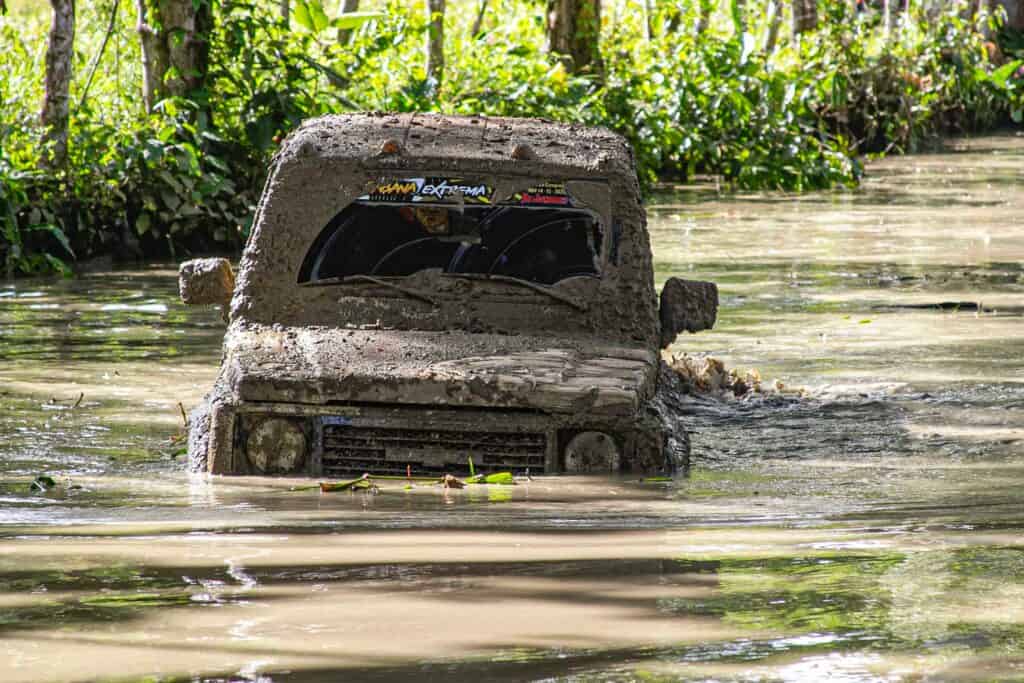
Dune Driving
Dune driving, which is also known as dune bashing is the act of driving your vehicle through sand dunes. pretty simple right? While the concept of driving in dunes is straightforward, the name of the game is momentum to keep you afloat on the sand. Depending on where you are driving, there are different types of sand that can add to the complexity of your drive. Some sand is denser and easier to stay on top of, while other sand is finer and easier to sink into.
While driving in an area with lots of sand dunes it is extremely important to pay attention to your surroundings. Dunes are an excellent visual obstruction that makes it hard, if not impossible to see if there is another vehicle on the other side. Often times it is required that your vehicle has a “dune flag” mounted to it so that it makes your vehicle visible before it crests over a dune. While this isn’t always a requirement, it is highly recommended. A dune flag is a cheap accessory that keeps everyone safer.
While momentum is key when it comes to driving in sand, it can still be a leisure activity. Many places have sand dunes near beaches. So while one person may be exploring a gravel backroad to a lake, another one could be adventuring through sand dunes to make it to the ocean. On the other hand, duning can also be a skill-testing challenge like rock crawling. Some people will see how far they can make it up large dunes before having to turn around, some will try and “slash the lip” and send sand sky high, and others view sand dunes as large jumps and their goal is to see how far they can send their vehicle through the air!
Much like the other 3 niches of off-roading I have covered so far, sand dune driving can be done in a mostly stock vehicle, however, if its something someone does often there is a slippery slope of wanting more power, better-suited tires, and better suspension – especially if someone is looking to jump their vehicle.
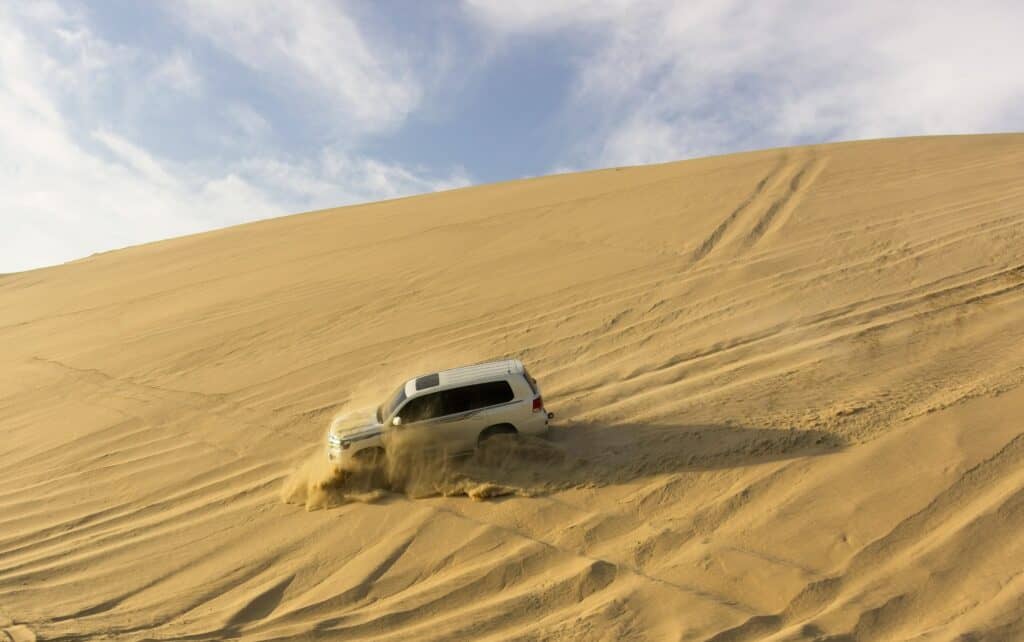
Pre-Running
This is my own opinion, but pre-running is most likely the smallest niche of off-roading. The barrier of entry is much higher, as it is rather costly to set up a proper prerunner. Before I get yelled at by an internet warrior, I should clarify that a prerunner is technically a style of vehicle vs an actual niche. A prerunner is traditionally a vehicle that is built to “pre-run” or drive a race course like the Baja 1000. The purpose of prerunning is to take notes of the track, look out for hazards, and help drivers envision their race before the big day.
Prerunners are as close as you can get to a desert race truck, without crossing over the line. They are built with large long travel shocks, beefy control arms, and modified bodies that allow for more wheel travel.
While a prerunner is technically a style of vehicle and activity you do before a race, it has grown in popularity amongst the off-roading community of Southern California and Mexico. The point of a prerunner that is built for the sole purpose of enjoyment and not competition, is to drive through “whoops” as fast as they can and quite often to jump.
One thing that is of interesting note, while 4×4 is recommended or necessary for most other off-road niches, it is not needed for a prerunner.
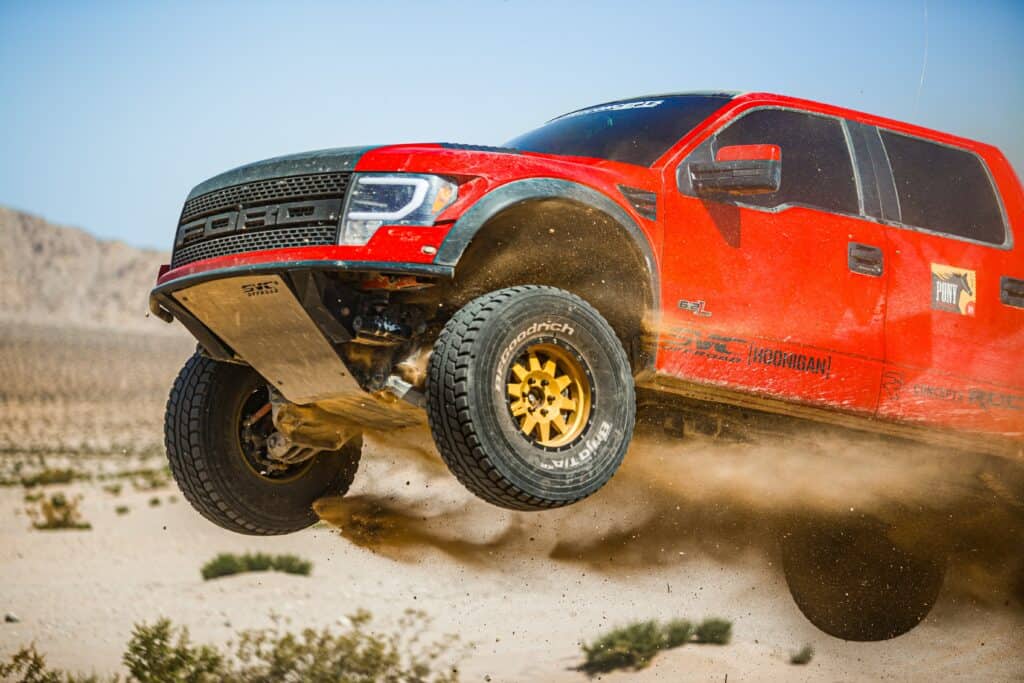
What Is Overlanding?
While off-roading has different definitions to different people, Overlanding is a lot more specific even though it is a term that is thrown around loosely in the off-roading community. Going back to the original definition, Overlanding is “[to] travel a long distance over land.”
The term Overlanding has become trendy in the last 5 or so years. Classically speaking Overlanding is a lifestyle for those who are deep in the community, they will pack up and leave on trips that last for weeks, months, or even years. Thousands upon thousands of miles are covered. Over the last 5 years, Overlanding has become a word that people use for their weekend camping trips.
While driving on paved roads can be a large part of an Overland trip, a bit of off-roading typically does occur.
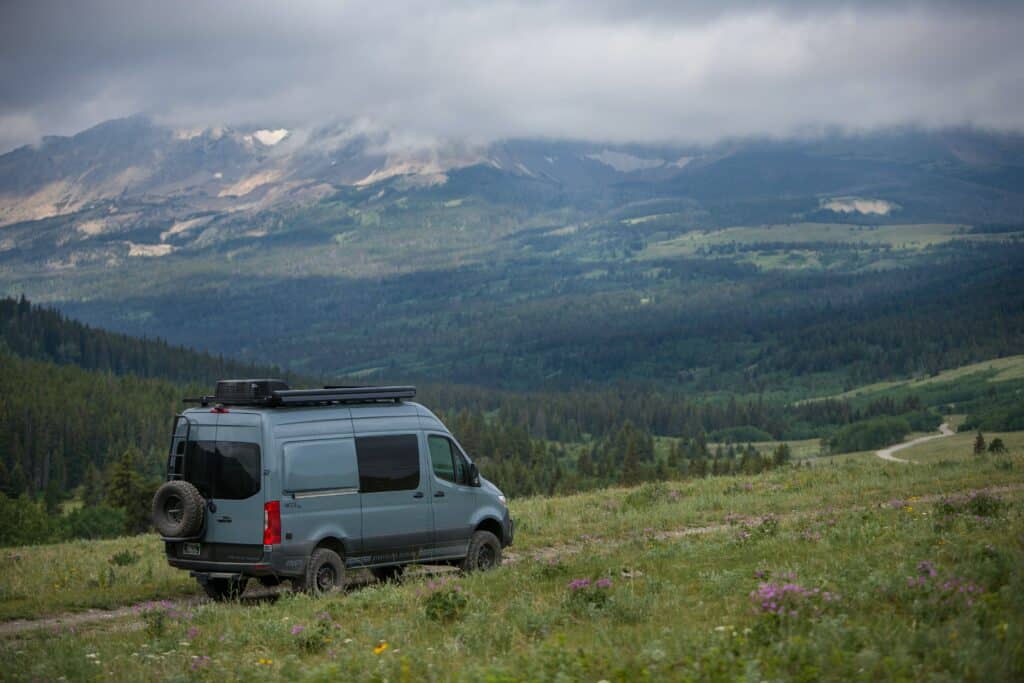
What Is The Difference Between Overlanding and a Road Trip?
The main difference between Overlanding and a road trip is that a road trip typically doesn’t involve wilderness camping and you’re a lot more likely to end up in a hotel.
Though Overlanding doesn’t have to be 100% off-road, those who overland typically spend a good amount of time exploring more primitive areas of the location they are in. This means that their vehicles need to be set up so that they are self-sufficient and capable of tackling tough terrain. Overlanders may be near civilization frequently, but they need to be prepped to spend days without supplies or help being nearby. This means carrying things such as extra water, jerry cans of gas, and sometimes even 2 spare tires.
Again with a road trip, you usually will not leave the pavement and your mother’s Honda Odessy will do the job just fine.
Why Are The Differences of Overlanding and Off-Roading Important?
If you are simply wanting to know the differences between the two, the answer is not necessarly an imporant one. However, if you are looking at building out a vehicle, knowing the purpose behind the build is important.
If you were wanting a pet you could take for walks and teach “shake a paw” to, you probably wouldn’t get a cat. While there are defintiely some cats out there that will tolerate leashes and you can teach the odd trick too, a dog is a lot more suitable of a pet. This same logic can be used for Overlanding and off-roading. If you want to build a rock crawler, I’d recommend you don’t purchase a sprinter van. On the other hand, if you want to build an Overland rig, I wouldn’t suggest purchasing a Suzuki Sidekick. Could either vehicle kind of do either activity? To a certain point they could, but neither is ideal unless the roles were reveresed.
Knowing what your intentions for you build are is a crucial point. If you are not set on what you’d like, don’t start throwing money around on purchases that are specific to one style of vehicle use. Using myself and my Tacoma for an example. In the time I have owned it, I have wanted to build it into a dedicated Overland vehicle, prerunner, and rock crawler. After 5 years of ownership, I think I have settled on the fact I need to build a hybrid. A jack of all trades and master of none.
If 5 years ago I had decided to go down the prerunner route, I would most likely have a vehicle that is at least a foot wider. The issue with this is that width can be an issue on some trails up here in BC. An extra 12 inches can be the difference of being comfortable on a trail or nervous as your wheel hugs the edge of a steep embankment.
On the other hand, if I had built my Tacoma into a crawling rig 5 years ago, while I could still do my overland style trips they wouldn’t be quite as comfortable due to the difference in suspension and most likley tire choice.
Which Build Is Best For You?
If you are not sure which activity you are more drawn towards or are like me and want a vehicle that is decent for all around use. Don’t fret about it. The world of off-roading and overlanding can be a money pit, but it doesn’t have to be.
If you don’t own your build vehicle yet, focus on reliabity and versatily. Also be sure to purchase a good set of all-terrain tires.
Don’t feel the need to put $5,000 suspension on your vehicle. A simple 1″ lift kit for under $1000 will do the trick. Will it ride as nice, no. Will it help you get to more places than your stock height vehicle, yes.
My advice is, don’t rush. Enjoy your vehicle at each stage of its build. Add accessories and mods as you need them. Find yourself going out at night a lot? Purchase some lighting. The stock height of your vehicle limiting where you can go? Then add a lift. Etc.
At the end of the day, whether you be Team Overland or Team Off-Road, the name of the game is having fun!